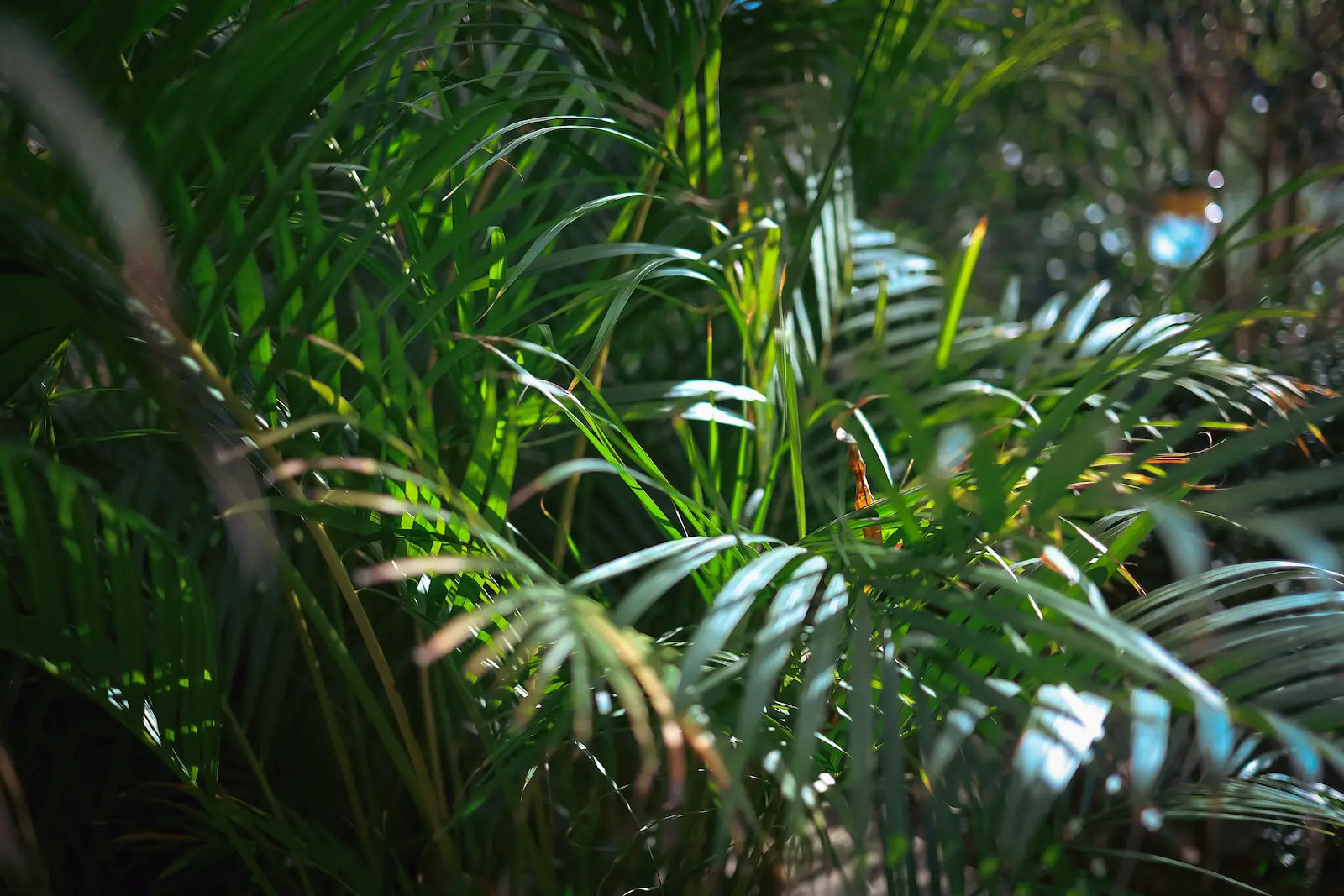The Areca Palm, often known for its graceful fronds and bright green leaves, is a highly sought-after houseplant that adds a tropical flair to any interior space. Native to Madagascar, the Areca Palm is a popular choice for both home and office environments. As an indoor plant, it’s celebrated not only for its decorative appeal but also for its air-purifying qualities.
In the wild, the Areca Palm can grow to staggering heights of over 30 feet, but when cultivated indoors, it typically reaches around 6-7 feet tall. The narrow, arching fronds create an attractive canopy, making the Areca Palm a favorite for creating privacy or simply adding elegance to a room.
The care of the Areca Palm is considered to be of moderate difficulty, suitable for those with some experience in houseplant maintenance. With proper attention to light, water, soil, and other factors, it can thrive for many years, providing lush greenery and a touch of the tropics to your living space.
| Attribute | Details |
|---|---|
| Common Names | Areca Palm, Butterfly Palm |
| Botanical Name | Dypsis lutescens |
| Family | Arecaceae |
| Plant Type | Tropical Tree |
| Mature Size | 6-7 feet indoors |
| Sun Exposure | Bright, indirect light |
| Soil Type | Well-draining, sandy soil |
| Hardiness Zones | 10-11 |
| Native Area | Madagascar |
Areca Palm Care
Areca Palm, often referred to as the Butterfly Palm, requires thoughtful care to achieve its full aesthetic potential. Although not overly complicated, care involves regular watering, proper light exposure, humidity management, and the use of the right soil mix. It’s a plant that reacts negatively to neglect, so consistent attention is necessary.
When properly maintained, the Areca Palm rewards its caretaker with a luscious display of green foliage. Regular monitoring for pests, pruning of dead leaves, and the application of occasional fertilizer can help the plant maintain its vibrant appearance.
Light Requirement for Areca Palm
Areca Palms flourish in bright, indirect light. Direct sunlight can scorch the leaves, whereas insufficient light can lead to leggy growth. A spot near a window with filtered light or a brightly lit room is typically ideal for this tropical plant.
Soil Requirements for Areca Palm
A well-draining, sandy soil mixture is suitable for Areca Palms. Adding sand or perlite to a standard potting mix can achieve the right consistency. The soil should allow water to pass through easily, preventing root rot while retaining some moisture for the roots.
Water Requirements for Areca Palm
Watering the Areca Palm should be done consistently, keeping the soil evenly moist but not soggy. Reducing watering in the winter months and ensuring proper drainage will prevent overwatering, which can lead to root rot.
Temperature and Humidity
Areca Palms thrive in temperatures ranging from 65-75°F (18-24°C) and prefer high humidity. A humidity tray or room humidifier can maintain the moisture levels in the air, replicating the palm’s natural tropical environment.
Fertilizer
Fertilizing with a balanced, liquid palm fertilizer every 2-3 months during the growing season will support healthy growth. It’s best to follow the instructions on the fertilizer package, and avoid over-fertilizing, which can cause leaf tip burn.
Pruning Areca Palm
Regular pruning to remove dead or yellowing fronds helps the Areca Palm maintain its attractive appearance. Using sharp, clean scissors or pruning shears, carefully trim the unwanted fronds at the base.
Propagating Areca Palm
Propagation of the Areca Palm can be achieved through division. By carefully separating the root ball into two or more sections and replanting, new individual plants can be created.
How To Grow Areca Palm From Seed
Growing Areca Palm from seed is a slow and meticulous process, often best left to experts. Fresh seeds can be sown in a well-draining medium and kept at a consistent temperature of around 80-85°F (27-30°C). Germination can take several months.
Common Pests & Plant Diseases
Spider Mites
These tiny pests can be treated with insecticidal soap or neem oil.
Mealybugs
Mealybugs can be controlled with alcohol-soaked cotton swabs or insecticidal soap.
Common Problems With Areca Palm
Yellowing Leaves
Often a sign of overwatering, this issue can be corrected by adjusting watering habits and ensuring proper soil drainage.
Brown Leaf Tips
This may be caused by low humidity or over-fertilizing. Increasing humidity and adjusting fertilization can resolve the problem.
Pro Tips
- Maintain consistent watering but avoid waterlogging the soil.
- Place in bright, indirect light to prevent leaf scorching.
- Use a well-draining soil mix with sand or perlite.
- Regularly prune dead or yellowing fronds.
- Monitor for pests and treat promptly if detected.

